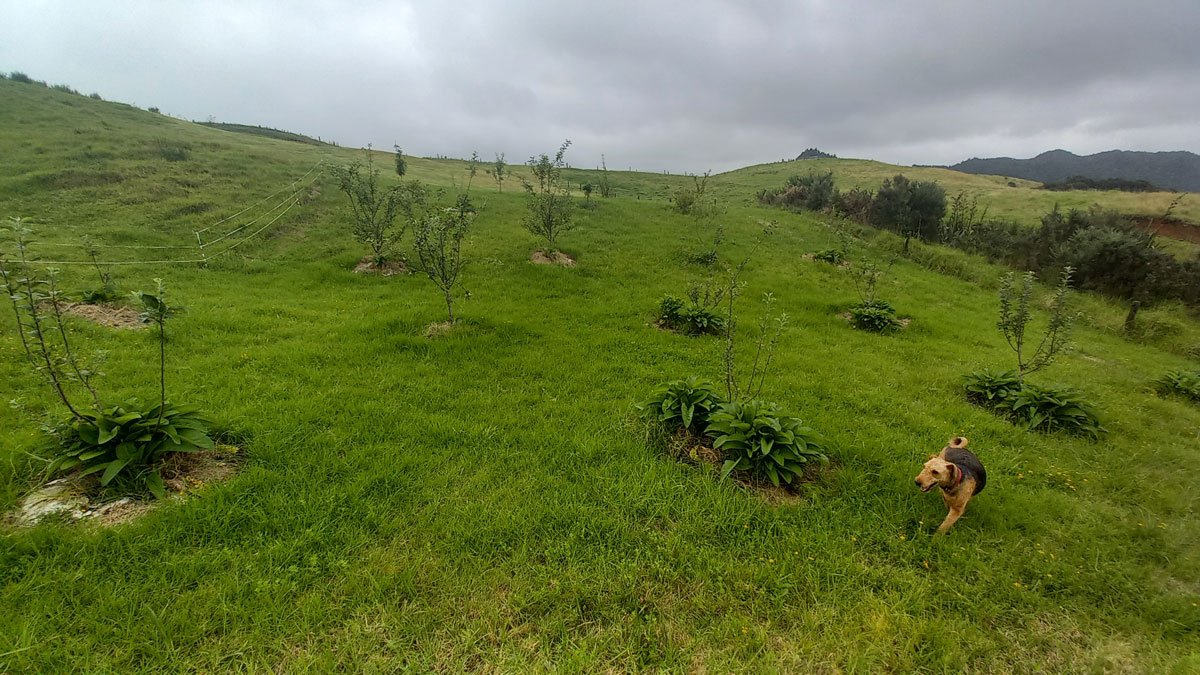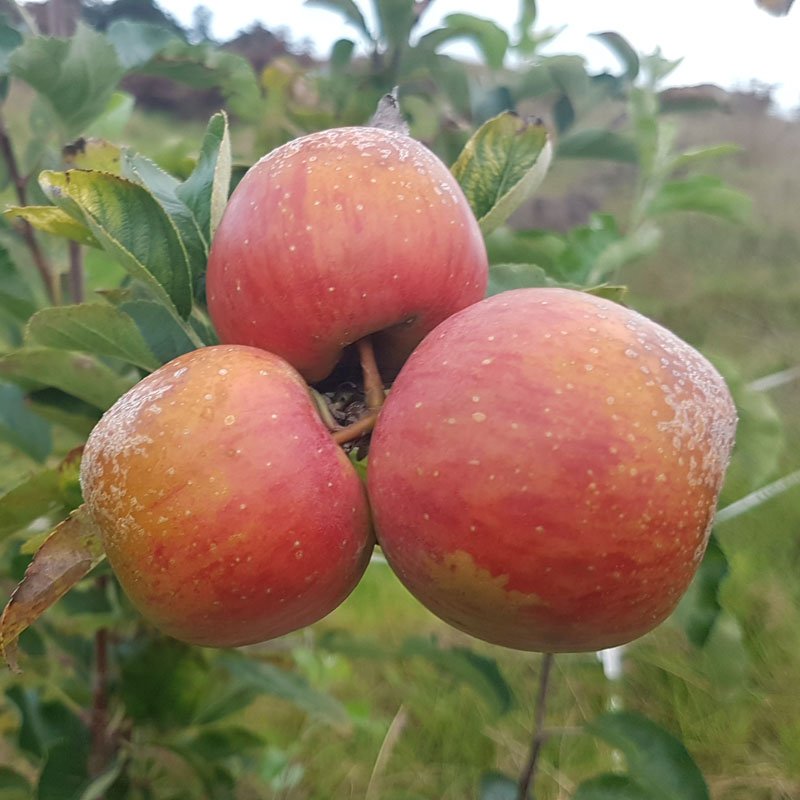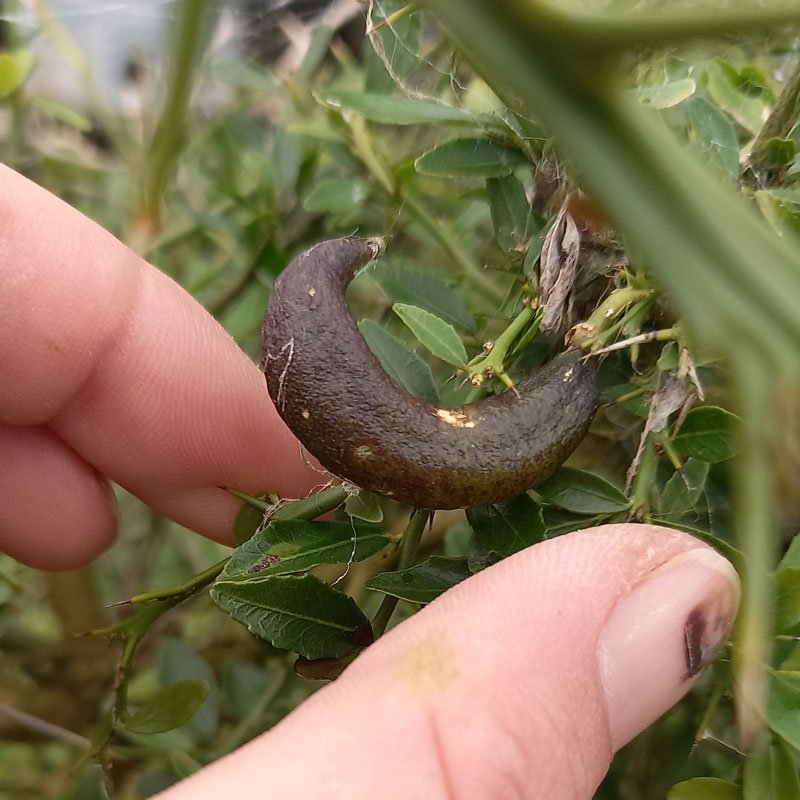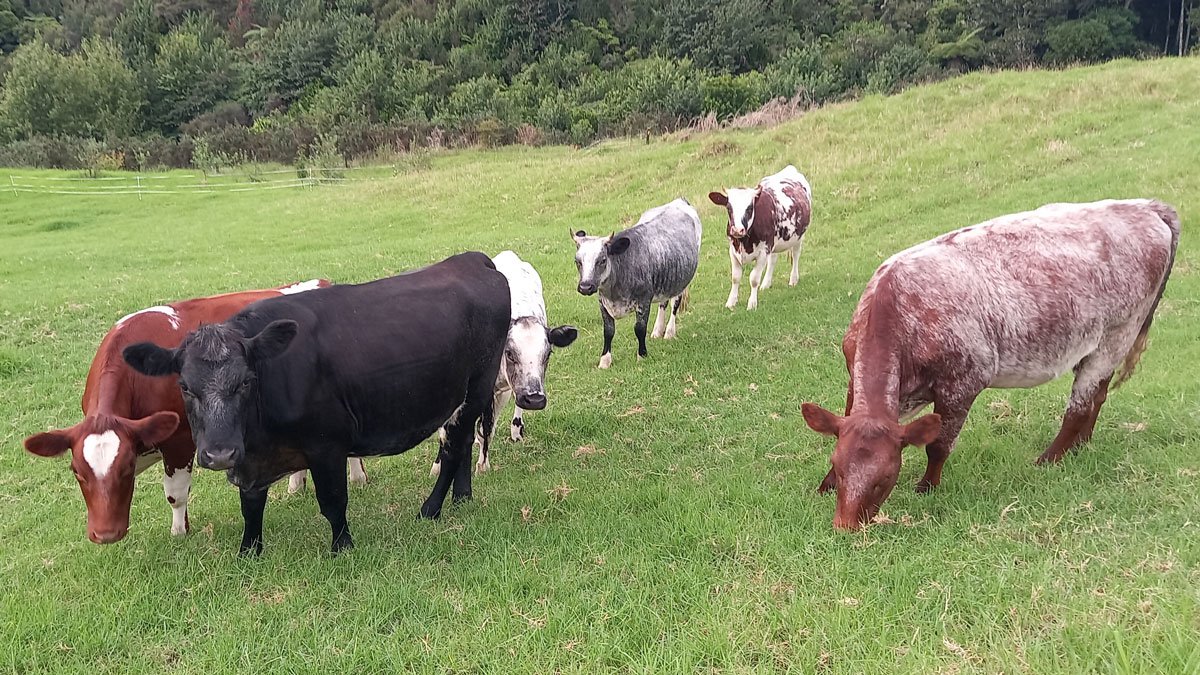Over the last week or so I’ve had a couple of people ask how often I visit the supermarket.
The answer is we generally head into our nearest town (Kerikeri) to top-up supplies weekly. But it took a minute for my brain to realise that what they were really asking is ‘how close are we to self-sufficiency?’
We are miles away from self-sufficiency. We’ll probably never actually realise it; and if we ever do it’s probably bad news for everyone.
Self-sufficiency basically means no inputs from the outside. Which is a pretty huge ask and not really the goal. Even with the things we are able to supply ourselves with, we’re still not technically ‘self sufficient’.
Water, potatoes, and eggs
These are the three things we’re probably closest to being self sufficient in; but we’re not.
Our water is collected off our roof and stored in a 30,000 litre tank. The average rainfall here 1596mm per year. Even with our tiny roof, that seems to work for us.
But to access it, it needs to be pumped with (mains) electricity, through two micron filters and a UV filter to the tap. The electricity, filters, and UV lightbulb all need to be purchased from the outside world and ensure it’s safe to drink.
We are capable of growing our entire year’s supply of potatoes and officially did it last year. But I tend to buy certified seed potatoes to start each season. This means we’re far less likely to introduce potato viruses to our soil, where they can remain for years.
It works out a lot cheaper than buying our potatoes – and it’s the crop we are closest to self-sufficiency in – but the outside input helps us maintain our ability to grow successfully each year.

Our chooks are fed with a commercial feed, which we buy from Farmlands. While I do grow crops for our chickens (like the sunflower they’re a little confused by in the header image), feeding 11 chickens for an entire year takes quite a lot of effort and space.
Owning a flock means that we have a reliable supply of eggs even in an egg-shortage, but their food is an input we need to purchase.
The produce department
There aren’t a lot of things we buy from the produce department, but there are some.
Mushrooms are seasonal and unreliable in our paddocks, but a staple in my cooking. So we usually buy a few of those each week. Similarly I try growing capsicum each year to mixed results, but we frequently buy those too.
I can’t grow corn, but I love it. Tropical armyworm usually brings us disaster each year. And it’s so cheap in-season that we buy it – usually from local producers via our local fruit and vege shop.

Many of our fruit trees are still young, and providing something closer to a snack than a harvest, so we’ll often purchase some fruit. And the heat of summer makes broccoli difficult to grow, so if the price is right and it’s not growing in the garden, it also goes in the shopping cart.
But generally we walk past most of the salad ingredients, I haven’t purchased garlic (for eating at least) in many years, and we’re totally good for all the herbs.
About to come online
In the last year we received our first harvests of blackberries, boysenberries, raspberries, blueberries, nectarine, passionfruit, Cox’s orange pippin apples, and olives. Just a few of each. Barely snacks, but filled with so much joy because we grew them ourselves.



We are currently looking forward to feijoa, finger lime, misi luki banana, chestnut, prickly pear, grape, coffee, peanuts, granny smith apple, and Merlin’s golden late apple. All of them are showing good signs of providing something in the near-future.






But it takes time for things to establish and get going. Bit by bit things are coming together, and one day I’m sure I’ll be on this blog moaning about having too much. But for now we’re still being delighted by our trees doing something new.
Meat and dairy
We lack the space for a freezer, so we haven’t done a home kill yet. And our cows don’t like me much, so there are no options in this herd for a house-cow either.

That means we buy our meat and dairy too. The truth is a house cow is a lot of work. She needs to be milked every day and – especially at the beginning – that’ll be a ridiculous amount of milk. Cheesemaking is a whole thing I’m saving to get into when I’m a bit older and have a bigger kitchen.
While both a home kill and a house cow would be easy enough to do in theory, our biggest limiting factor is really the space to store and process it all. We purchased basically-bare farmland, and we’ve got enough on our plates still setting up the basics.
So for now at least we buy our milk, butter, cheese, and meat too.
A good start
What we have made is a really good start at a well-rounded production system. And each day we do a little bit more work to be a little more self-sustainable.
But it’s unlikely I’m going to get into soapmaking. I’ll never be processing my own wood pulp into toilet paper. I’m next-to-useless with any kind of textile. And sometimes it’s just not worth the effort to compete with an efficient global production system.
Of course, the last few years have shown us what happens when that global production system becomes less efficient.
For more than a decade, I bared my way through doubt and sometimes outright mockery when I insisted I would only purchase land in an elevated position, far away from the ocean. I’m not taking much pleasure in that position being proven prudent within my lifetime.
Worst-case scenario
We have the bones for self-sufficiency, if we had to. There’s a large section of native bush which is home to possums, pheasants, pigs, and quail. We have some knowledge of edible wild plants and herbal medicine. I know that it’s possible to live off this land, because people have done it before.
The diaries of one of the original colonial settlers, William Bramley, detail hunting and foraging here during the depression of the late nineteenth century, and of course the people of Ngāti Kahu ki Whaingaroa did it before them. The environment is very different now, but I think it’s still possible.
Rather than being a goal, self-sufficiency is a back up plan. And my brain kind of lives between two futures – one that resembles today, and one that resembles something far more apocalyptic.
I experiment with growing crops specifically for chicken food in the garden. We do have 6 heifers, even if they’re not the friendliest. More fruiting plants and trees are planted each year. We’re friendly with our neighbours. I think we could survive if we were forced into a position of having to.
But I’d really rather not have to, you know? I’d prefer we didn’t screw our planet and social structures so monumentally that I’m forced to cook possum and kawakawa stew over an open fire to survive. It’s much nicer being able to access what we need, when we need it.
For all its problems, the global trading economy has allowed us to grow and access a lot of things that would be very helpful in the event of a societal or economic collapse. But ultimately right now we live in a world where we can grab a bottle of milk from the dairy without much fuss when we need it. And honestly, I’d prefer that future any day.



I have a decent orchard and I still am not getting much actual fruit. Bronze beetles destroyed my only plum tree that had plums on it(tree has recovered). It is a pollination problem I have to solve. My lovely tamarillo tree has had all of its tamarillos blown off. Getting to self sufficiency would be impossible for me but as you say, partial self sufficiency is enough. I would like to be self sufficient in the stuff that is eyewateringly expensive in the shops. My passionfruit tree provides alot of very flavoursome fruit. I got 1 raspberry.
You are doing very well with your stuff.
Thanks Jenny. I know we’re moving forward but it’s sometimes hard to see on a day-to-day basis. I might have to look into bronze beetles – something’s been attacking my plums too! Improving pollination is one of our goals in the orchard this year as well. We got quite a lot of flowers on our trees, but a lot less fruit set. I think introducing some nice weedy bee-attractors like borage into that area might help a lot – I’m sure it’s going to be a blog topic sometime later this year 🙂